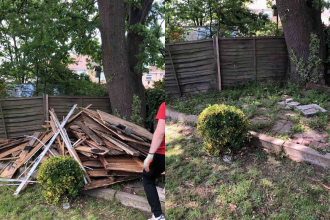The history of candles stretches back centuries, with the earliest known use dating to at least 3000 BC. From ancient times to the present day, candles have served various purposes, including providing light and heat, featuring in religious ceremonies, and decorating spaces. They remain a popular choice for home decor and ambiance today. You might ask: when were candles invented?
This blog post will delve into the intriguing history of candles and when they were first introduced.
The Tale of the Candle:
Candles weren’t created in one monumental event. Instead, their evolution was gradual, spanning many centuries. The earliest evidence of candle-making dates back to 3000 BC in Egypt, where rushes soaked in animal fat or beeswax were ignited as primitive torches. Later, around 200 BC, during China’s Han Dynasty, people started using insect wax combined with seeds to craft rudimentary candle wicks. These could be lit after dipping them in melted tallow (animal fat) or beeswax.
Rise of Candle Making as an Art Form
Candle-making became an art form during the Middle Ages, as churches incorporated them into their rituals and decorations. During this period, beeswax was the preferred material for candles due to its higher melting point than other available waxes, such as tallow or lard oil, which burned faster. Beeswax also emitted a pleasant scent while burning, contributing to its appeal as a decorative item in churches and homes. By the 15th century, most households had access to some form of candle lighting due to technological advances, enabling more efficient production methods like rolling beeswax sheets into tubes, filling them with melted wax, and molding them into candles.
Modern Candle-Making Techniques
In modern times, there have been numerous advancements in candle-making techniques. Methods of candle production vary widely, from large-scale manufacturing processes that rely on paraffin waxes to more artisanal methods. The latter often involves hand-pouring candles, using natural ingredients like soy waxes and essential oils, for a more luxurious and eco-friendly end product. Many specialty stores now offer custom-scented candles tailored to each customer’s individual tastes and preferences. These include various types and styles such as votive, taper, pillar (or “church”), and container/jarred varieties. Many companies have also developed innovative ways to incorporate fragrance into their products using wickless systems like electric warmers or reed diffusers. These systems allow customers to enjoy highly fragrant aromas, like traditional burning candles, without needing an open flame.
The Transition of Candles to Scented Candles: The Fragrant Journey
The story of candles transitioning into aromatic masterpieces is as fascinating as the flickering glow they emit. While basic candles provided light and heat for centuries, it wasn’t until the late 19th century that a new aromatic dimension was introduced. The industrial revolution saw the mass production of candles, leading to the integration of scents.
The exact history of scented candles is a little hazy, but the use of aromas for therapeutic purposes traces back to ancient civilizations. Egyptians used fragrant oils for religious rituals, which likely paved the way for infusing candles with fragrances.
The real game-changer arrived in the 20th century when companies started using essential oils and synthetic compounds to create an array of scented candles. This transformation redefined the role of candles from being a mere source of light to an element of décor, therapy, and luxury. Today, scented candles offer a sensory journey, where each fragrance carries the power to evoke memories and emotions and set the ambiance, proving to be far more than a tool for illumination.
Scented Candles: Adding a luxurious touch to everyday necessity:
Scented candles, far more than a simple source of light, have transformed mundane rituals into luxurious experiences. Imagine a quiet night in your room bathed in the soft, calming glow of candlelight while notes of lavender, vanilla, or eucalyptus perfume the air, soothing your senses. Scented candles have the power to transport you to a rose garden, a forest, or a calming beach with just a spark of a match. Beyond their aesthetic appeal, they serve a therapeutic purpose, using the principles of aromatherapy to infuse everyday moments with luxury and relaxation. Their rich fragrances can enhance mood, reduce stress, and improve overall well-being.
In conclusion, the journey of candles from simple illuminating tools to aromatic indulgences mirrors human innovation and desire for comfort. As they transitioned over centuries, candles morphed from bare utility to fragrant luxuries, setting our rooms and our senses alight. Scented candles today are a testament to our past while offering a soothing, sensory escape in our homes. They’re not just about casting light anymore but about creating experiences, underlining how far this simple invention has come.














